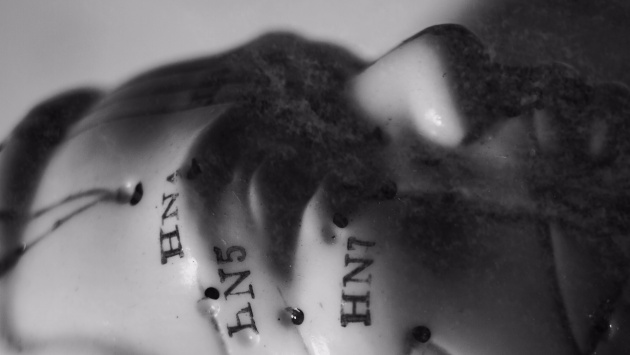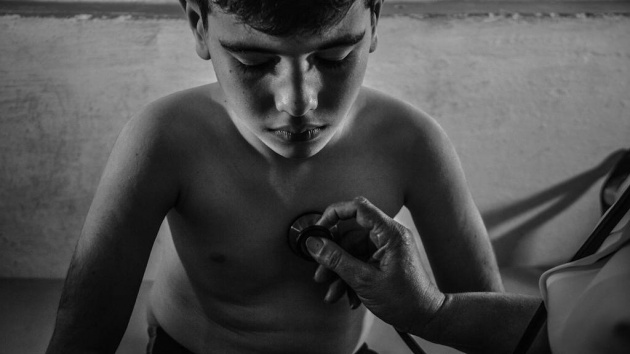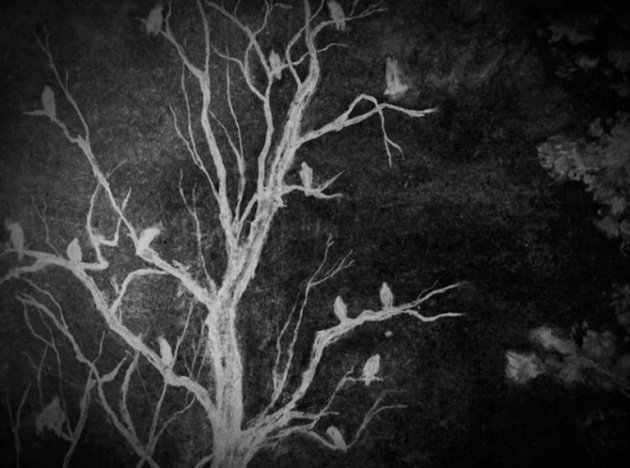The Whole Tragedy of War

The film The Many Deaths of Arístides by Lázaro Lemus from Cuba was one of the great surprises of the International Short Film Festival Oberhausen 2020. Lemus is a newly-discovered, emerging filmmaker whose work bears special importance for film and the cinematic world. In The Many Deaths of Arístides Lemus narrates the story of a close member of his family, Aristides, who never returned from his military service. Left only with the letter he found from Aristides and a photograph, Lemus rebuilds the story through animation, photographs, images, and sound that reconstruct his own memory and bring Aristides’s story back to life, which would otherwise remain unknown. Aristides’s letter, originally written to his mother, the director relates in the film to Aristides’s sister, wanting to connect the past and the present.
Lázaro Lemus builds the film from the fragments of his own early memories of the story, with little surviving physical material which belonged or is related to Aristides. The film starts with the animation of a silhouetted figure on a boat, in what looks like an undeveloped negative of a photograph, journeying towards the lighthouse. The narration starts with the still images – photographs of a young boy – followed by the reading of Aristides’s letter. These still images, in their meticulous framing and rich composition appearing more as frozen shots from a film rather than traditional photographs, fuse with the moving image of the mother/sister’s sewing machine, putting the memory into motion and giving life to the main character. The letter, read by Lazaro Lemus himself, reveals Aristides as a person: he narrates about the small details he notices in his long days in military service, such as the description of the vultures next to the sea, but also his thoughts on death and life.

The central moment is Aristides’s prayer for Olga: he prays for her faith, solitude and strength in all circumstances. We hear the prayer but we also see it through the image of a lamp shining in the depths of darkness. This visual spark, additionally, reveals something more than ‘just a prayer’ – it is a cry to God for the safety of his mother/sister – it is an expression of a deeply intimate, personal relation of Aristides with God that manifests as love for the ‚other‘, even though they are in this case his closest family. Though we do not actually know him, the moment gives us a glimpse into Aristides’s soul. He appears as a shining lamp in the dark abyss around him. The lips of the soldier move pronouncing the words slowly: “I..Will...Kill...You”, and the animated images of a man covering his eyes; a still body on the ground surrounded by the soldiers’ boots indicate the terrible moment of the death of Aristides that he perhaps intuitively foresaw when he described, in the letter, how it must be terrible to die in a foreign land, when he prayed that his mother/sister finds that Christ is the best companion and that He give her strength.
The body left alone on the beach, the sea that turns into a sky-like vast horizon, the birds flying into the sky, images of life, and again the sewing machine, create a movement that connects the past and the present. The final shot is the mother/sister’s feet in a broken slow-motion movement, in what appear as a series of frames cut out of the usual 24 frames per second. Something has changed in them as they finished the letter. There is a breaking of the heart but from the continued motion we also experience hope as the prayer for Olga is set to materialize beyond the screen.

In all my years of service at the Ecumenical Jury and the extensive academic research I have never encountered a film that narrates the story about war, about life and the tragic death of a soldier, a son, a young man, in such a novel way. Many other films concerned with the question of life and death in war range from those rather distant personal portraits, those that represent perpetual victims and long for the possibility of reconciliation, or those that depict memory and trauma. Lázaro Lemus does not make a documentary in the usual sense and at the same time he rejects tangling a political dimension into the story, which in stories of this kind is difficult. By depoliticizing the story Lemus achieves what many filmmakers failed to do: he shows the whole tragedy of war and the perishing of – even one – human life on a very personal level. Interestingly, though Lemus’s visual forms are often abstract and almost intangible, we experience the tragedy in a very concrete and tangible way. We encounter Aristides not as a ‚distant other’, or another victim, but as a very intimate figure.
Lázaro Lemus paints a deeply intimate memory, bringing to life the person – Aristides – and through him the uniqueness of a human being and his existence. By taking him visually out of the anonymity of death into the tender story of hope and love, Lemus visually accomplishes that which can only be done cinematically: he breaks the time boundaries, connecting spaces, past and present, restoring memory and bringing it to the next level as eternal memory – something we could have seen in the works of Andrei Tarkovsky – it is „time within time“. This concept of eternal memory is beyond Lázaro Lemus himself, and as such is important for film art: film transcends what is not to be understood in words merely or as physical/historical evidence.
However, Lemus’s film does not just bring forward Aristides from ‘the anonymity of death’, rather it reveals that there is no such thing as anonymity in the eyes of God and in love itself: love that existed personalizes those who are lost and who left no physical traces in the world. Lemus visually paints the portrait of a person, his prayer and last thoughts, avoiding politics, pathos, sentimentality, and emotional manipulation. He provides not only a genuine film but a visual artistic masterpiece. It is a refreshing and much awaited approach with a unique and original aesthetic style: the human condition with all its goodness and tragedy is told through the film language. It is an inspiring work and there is no doubt that we will hear more about Lazaro Lemus in the future.

